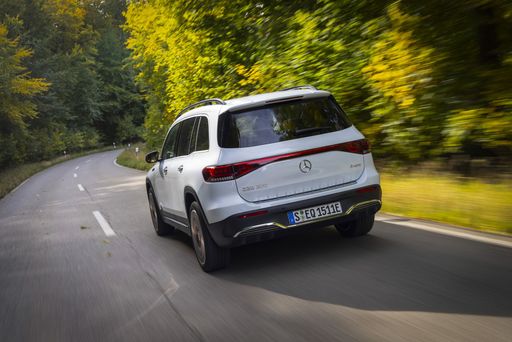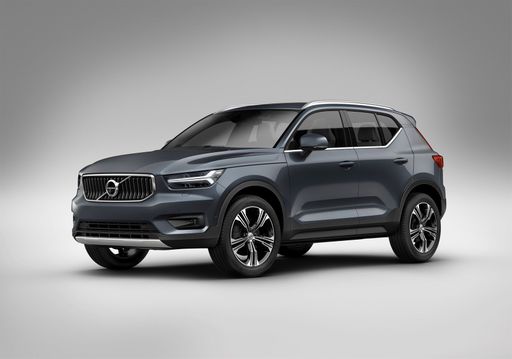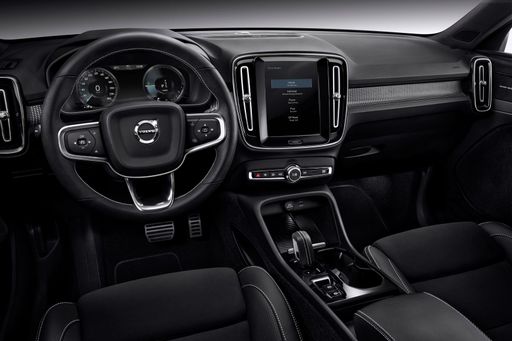Mercedes EQB vs Volvo XC40 - Differences and prices compared
Costs and Efficiency:
Price and efficiency are often the first things buyers look at. Here it becomes clear which model has the long-term edge – whether at the pump, the plug, or in purchase price.
Volvo XC40 has a distinct advantage in terms of price – it starts at 36800 £, while the Mercedes EQB costs 45900 £. That’s a price difference of around 9107 £.
Engine and Performance:
Power, torque and acceleration say a lot about how a car feels on the road. This is where you see which model delivers more driving dynamics.
When it comes to engine power, the Mercedes EQB has a evident edge – offering 292 HP compared to 197 HP. That’s roughly 95 HP more horsepower.
In acceleration from 0 to 100 km/h, the Mercedes EQB is noticeable quicker – completing the sprint in 6.20 s, while the Volvo XC40 takes 7.60 s. That’s about 1.40 s faster.
In terms of top speed, the Volvo XC40 performs to a small extent better – reaching 180 km/h, while the Mercedes EQB tops out at 160 km/h. The difference is around 20 km/h.
There’s also a difference in torque: Mercedes EQB pulls significantly stronger with 520 Nm compared to 300 Nm. That’s about 220 Nm difference.
Space and Everyday Use:
Beyond pure performance, interior space and usability matter most in daily life. This is where you see which car is more practical and versatile.
Seats: offers more seating capacity – vs .
In curb weight, Volvo XC40 is distinct lighter – 1688 kg compared to 2105 kg. The difference is around 417 kg.
In terms of boot space, the Mercedes EQB offers minimal more room – 495 L compared to 452 L. That’s a difference of about 43 L.
In maximum load capacity, the Mercedes EQB performs distinct better – up to 1710 L, which is about 382 L more than the Volvo XC40.
When it comes to payload, Volvo XC40 somewhat takes the win – 532 kg compared to 435 kg. That’s a difference of about 97 kg.
Who comes out on top?
Overall, the Mercedes EQB shows itself to be dominates this comparison and secures the title of DriveDuel Champion.
It convinces with the more balanced overall package and proves to be the more versatile choice for everyday use.
 @ Mercedes-Benz Group Media
@ Mercedes-Benz Group Media
Mercedes EQB
Costs and Consumption
View detailed analysis
Engine and Performance
View detailed analysis
Dimensions and Body
View detailed analysis
Mercedes EQB
The Mercedes EQB is an electric compact SUV that dresses Mercedes' premium feel in practical clothing, with flexible seating and a serene, composed ride that turns everyday errands into a small luxury. It won't thrill the enthusiast, but for buyers who want a smart, spacious and well-made EV with tasteful tech and real-world usability, the EQB is a sensible, slightly buttoned-up choice that impresses without shouting.
details @ Mercedes-Benz Group Media
@ Mercedes-Benz Group Media
 @ Mercedes-Benz Group Media
@ Mercedes-Benz Group Media
 @ Mercedes-Benz Group Media
@ Mercedes-Benz Group Media
 @ Mercedes-Benz Group Media
@ Mercedes-Benz Group Media
 @ Mercedes-Benz Group Media
@ Mercedes-Benz Group Media
Volvo XC40
The Volvo XC40 wraps Scandinavian minimalism into a compact, city-ready SUV with a premium cabin that feels both practical and grown-up. It will suit buyers who prize safety, clever storage and a composed ride, proving that small dimensions don't mean small personality.
details @ Volvo Cars
@ Volvo Cars
 @ Volvo Cars
@ Volvo Cars
 @ Volvo Cars
@ Volvo Cars
 @ Volvo Cars
@ Volvo Cars
 @ Volvo Cars
@ Volvo Cars
 @ Mercedes-Benz Group Media
@ Mercedes-Benz Group Media
|
 @ Volvo Cars
@ Volvo Cars
|
|
|
|
Costs and Consumption |
|
|---|---|
|
Price
45900 - 58900 £
|
Price
36800 - 47200 £
|
|
Consumption L/100km
-
|
Consumption L/100km
6.50 L
|
|
Consumption kWh/100km
15.2 - 17.2 kWh
|
Consumption kWh/100km
-
|
|
Electric Range
468 - 535 km
|
Electric Range
-
|
|
Battery Capacity
70.50 kWh
|
Battery Capacity
-
|
|
co2
0 g/km
|
co2
147 - 148 g/km
|
|
Fuel tank capacity
-
|
Fuel tank capacity
54 L
|
Dimensions and Body |
|
|---|---|
|
Body Type
SUV
|
Body Type
SUV
|
|
Seats
5
|
Seats
5
|
|
Doors
5
|
Doors
5
|
|
Curb weight
2105 - 2170 kg
|
Curb weight
1688 kg
|
|
Trunk capacity
495 L
|
Trunk capacity
452 L
|
|
Length
4684 mm
|
Length
4425 mm
|
|
Width
1834 mm
|
Width
1863 mm
|
|
Height
1654 - 1689 mm
|
Height
1652 mm
|
|
Max trunk capacity
1710 L
|
Max trunk capacity
1328 L
|
|
Payload
435 kg
|
Payload
532 kg
|
Engine and Performance |
|
|---|---|
|
Engine Type
Electric
|
Engine Type
Petrol MHEV
|
|
Transmission
Automatic
|
Transmission
Automatic
|
|
Transmission Detail
Reduction Gearbox
|
Transmission Detail
Dual-Clutch Automatic
|
|
Drive Type
Front-Wheel Drive, All-Wheel Drive
|
Drive Type
Front-Wheel Drive
|
|
Power HP
190 - 292 HP
|
Power HP
163 - 197 HP
|
|
Acceleration 0-100km/h
6.2 - 8.9 s
|
Acceleration 0-100km/h
7.6 - 8.6 s
|
|
Max Speed
160 km/h
|
Max Speed
180 km/h
|
|
Torque
385 - 520 Nm
|
Torque
265 - 300 Nm
|
|
Number of Cylinders
-
|
Number of Cylinders
4
|
|
Power kW
140 - 215 kW
|
Power kW
120 - 145 kW
|
|
Engine capacity
-
|
Engine capacity
1969 cm3
|
General |
|
|---|---|
|
Model Year
2024 - 2025
|
Model Year
2024
|
|
CO2 Efficiency Class
A
|
CO2 Efficiency Class
E
|
|
Brand
Mercedes-Benz
|
Brand
Volvo
|
What drive types are available for the Mercedes EQB?
The Mercedes EQB is available as Front-Wheel Drive or All-Wheel Drive.
The prices and data displayed are estimates based on German list prices and may vary by country. This information is not legally binding.
